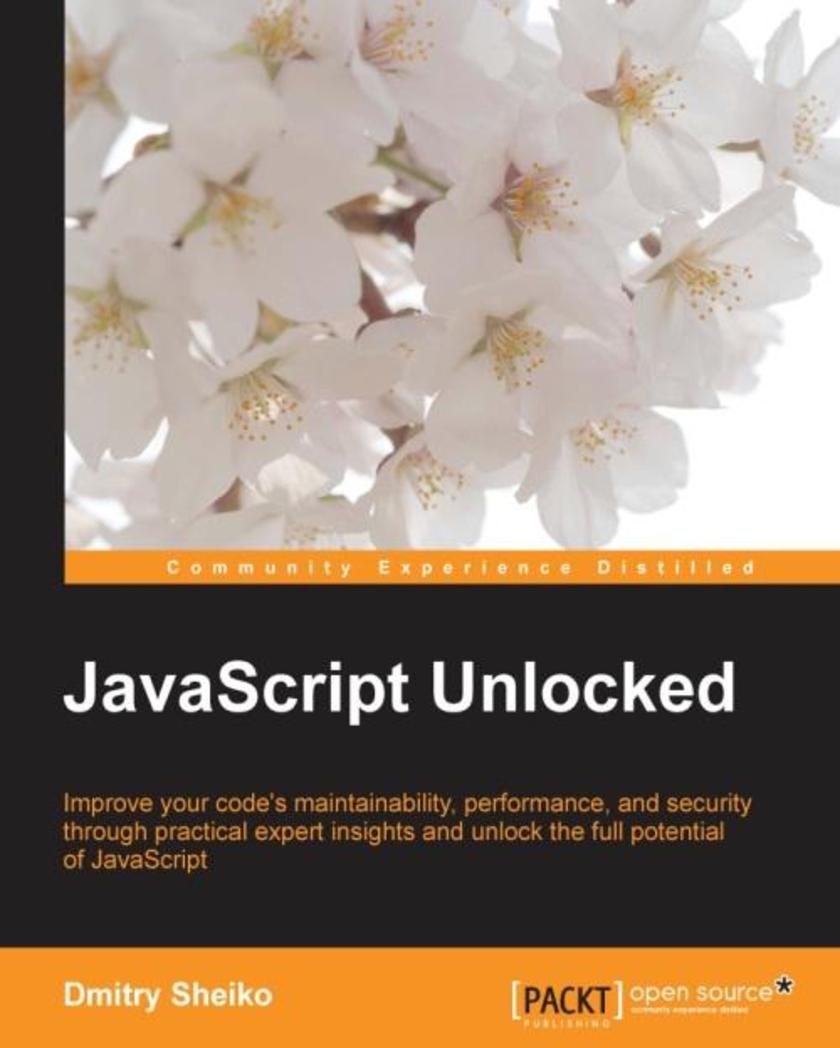
JavaScript Unlocked
¥54.49
Improve your code maintainability, performance, and security through practical expert insights and unlock the full potential of JavaScript About This Book Improve your JavaScript code for better maintainability and performance Discover how to implement scalable application architecture with JavaScript Learn to use JavaScript behind the browser, including its command-line tools, desktop apps, and native mobile apps Who This Book Is For JavaScript Unlocked is for those JS developers who want to see just how far they can push their favourite language through practical insight and techniques. What You Will Learn Make your code readable and expressive by using simple syntax of JavaScript Grasp existing JavaScript collections such as arrays and array-like objects Develop abstract data types in most effective way to extend JavaScript into a more flexible and powerful programming language Examine the pros and cons of JavaScript by implementing real-time code examples Flourish real-time mini-projects by using JavaScript on server side to develop desktop as well as mobile applications Work on parallel tasks with asynchronous JavaScript Improve code maintainability and readability and boost apps performance through JavaScript In Detail JavaScript stands bestride the world like a colossus. Having conquered web development, it now advances into new areas such as server *ing, desktop and mobile development, game *ing, and more. One of the most essential languages for any modern developer, the fully-engaged JavaScript programmer need to know the tricks, non-documented features, quirks, and best practices of this powerful, adaptive language. This all-practical guide is stuffed with code recipes and keys to help you unlock the full potential of JavaScript. Start by diving right into the core of JavaScript, with power user techniques for getting better maintainability and performance from the basic building blocks of your code. Get to grips with modular programming to bring real power to the browser, master client-side JavaScript *ing without jQuery or other frameworks, and discover the full potential of asynchronous coding. Do great things with HTML5 APIs, including building your first web component, tackle the essential requirements of writing large-scale applications, and optimize JavaScript’s performance behind the browser. Wrap up with in-depth advice and best practice for debugging and keeping your JavaScript maintainable for scaling, long-term projects. With every task demonstrated in both classic ES5 JavaScript and next generation ES6-7 versions of the language, Whether read cover-to-cover or dipped into for specific keys and recipes, JavaScript Unlocked is your essential guide for pushing JavaScript to its limits.Style and approachThis practice-oriented cookbook is packed full of code examples put in the form: problem, classical solution, and methods to optimize webpage in both JavaScript ES5 and ES6 language editions. But this thorough guide is best-suited to those who like to “learn by doing” as the topics are covered using real-life examples and tutorials.
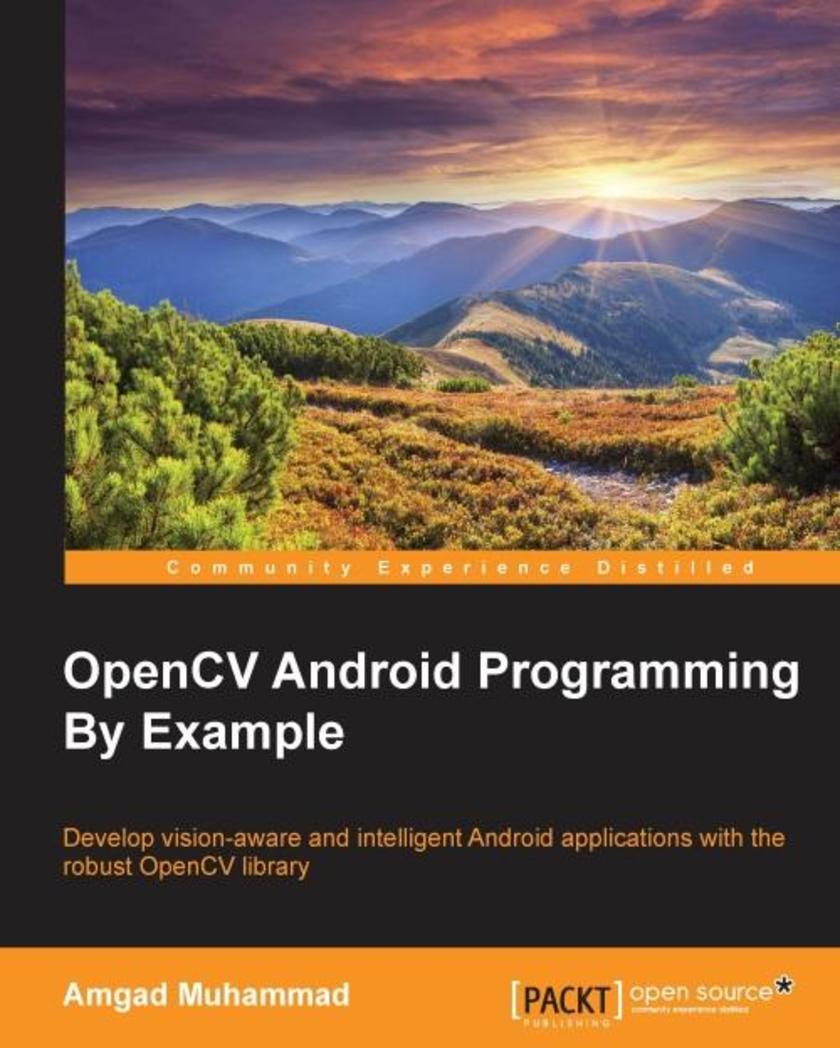
OpenCV Android Programming By Example
¥54.49
Develop vision-aware and intelligent Android applications with the robust OpenCV library About This Book This is the most up-to-date book on OpenCV Android programming on the market at the moment. There is no direct competition for our title. Based on a technology that is increasing in popularity, proven by activity in forums related to this topic. This book uniquely covers applications such as the Panoramic viewer and Automatic Selfie, among others. Who This Book Is For If you are an Android developer and want to know how to implement vision-aware applications using OpenCV, then this book is definitely for you. It would be very helpful if you understand the basics of image processing and computer vision, but no prior experience is required What You Will Learn Identify and install all the elements needed to start building vision-aware Android applications Explore image representation, colored and gray scale Recognize and apply convolution operations and filtering to deal with noisy data Use different shape analysis techniques Extract and identify interest points in an image Understand and perform object detection Run native computer vision algorithms and gain performance boosts In Detail Starting from the basics of computer vision and OpenCV, we'll take you all the way to creating exciting applications. You will discover that, though computer vision is a challenging subject, the ideas and algorithms used are simple and intuitive, and you will appreciate the abstraction layer that OpenCV uses to do the heavy lifting for you. Packed with many examples, the book will help you understand the main data structures used within OpenCV, and how you can use them to gain performance boosts. Next we will discuss and use several image processing algorithms such as histogram equalization, filters, and color space conversion. You then will learn about image gradients and how they are used in many shape analysis techniques such as edge detection, Hough Line Transform, and Hough Circle Transform. In addition to using shape analysis to find things in images, you will learn how to describe objects in images in a more robust way using different feature detectors and de*ors. By the end of this book, you will be able to make intelligent decisions using the famous Adaboost learning algorithm. Style and approach An easy-to-follow tutorial packed with hands-on examples. Each topic is explained and placed in context, and the book supplies full details of the concepts used for added proficiency.
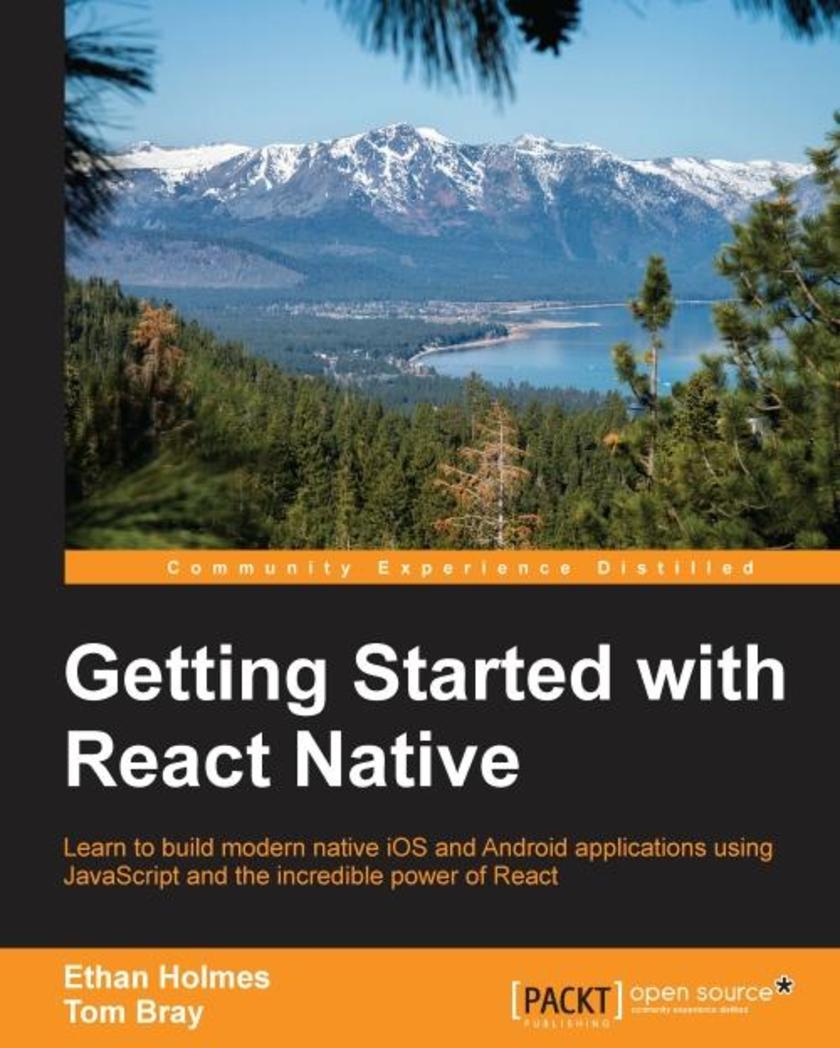
Getting Started with React Native
¥54.49
Learn to build modern native iOS and Android applications using JavaScript and the incredible power of React About This Book Learn to design and build a fully-featured application using the newest cutting-edge framework from Facebook Leverage your JavaScript skills to become a native app developer Develop custom UI components, implement smooth navigation, and access native features such as geolocation and local storage Who This Book Is For This book is for web developers who want to learn to build fast, good-looking, native mobile applications using the skills they already have. If you already have some JavaScript knowledge or are using React on the web, then you will be able to quickly get up and running with React Native for iOS and Android. What You Will Learn Set up the React Native environment on both devices and emulators Gain an in-depth understanding of how React Native works behind the scenes Write your own custom native UI components Learn the ins and outs of screen navigation Master the art of layout and styles Work with device-exclusive data such as geolocation Develop native modules in Objective-C and Java that interact with JavaScript Test and deploy your application for a production-ready environment In Detail React Native is a game-changing approach to hybrid mobile development. Web developers can leverage their existing skills to write mobile applications in JavaScript that are truly native without using cross-compilation or web views. These applications have all of the advantages of those written in Objective-C or Java, combined with the rapid development cycle that JavaScript developers are accustomed to. Web developers who want to develop native mobile applications face a high barrier to entry, because they are forced to learn platform-specific languages and frameworks. Numerous hybrid technologies have tried to simplify this process, but have failed to achieve the performance and appearance that users expect. This book will show you all the advantages of true native development that React Native has without the steep learning curve, leveraging the knowledge you already have. We do this by getting you up and running quickly with a sample application. Next, we’ll introduce you to the fundamentals of creating components and explain how React Native works under the hood. Once you have established a solid foundation, you will dive headfirst into developing a real-world application from start to finish. Along the way, we will demonstrate how to create multiple screens and navigate between them,use layout and style native UI components, and access native APIs such as local storage and geolocation. Finally, we tackle the advanced topic of Native modules, which demonstrates that there are truly no limits to what you can do with React Native. Style and approach This book provides a simple and easy way to build mobile applications in JavaScript. Each topic takes you through the life cycle of creating a fully-functional native app, with detailed explanations of the entire process.
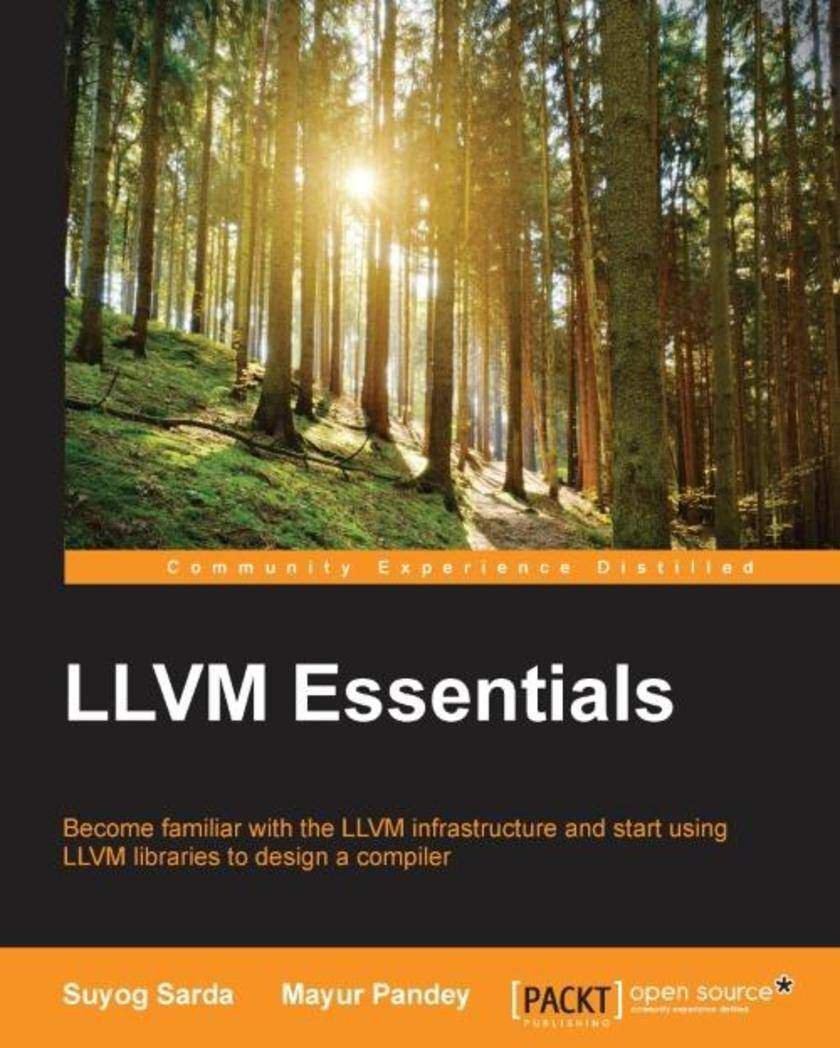
LLVM Essentials
¥45.77
Become familiar with the LLVM infrastructure and start using LLVM libraries to design a compiler About This Book Learn to use the LLVM libraries to emit intermediate representation (IR) from high-level language Build your own optimization pass for better code generation Understand AST generation and use it in a meaningful way Who This Book Is For This book is intended for those who already know some of the concepts of compilers and want to quickly get familiar with the LLVM infrastructure and the rich set of libraries that it provides. What You Will Learn Get an introduction to LLVM modular design and LLVM tools Convert frontend code to LLVM IR Implement advanced LLVM IR paradigms Understand the LLVM IR Optimization Pass Manager infrastructure and write an optimization pass Absorb LLVM IR transformations Understand the steps involved in converting LLVM IR to Selection DAG Implement a custom target using the LLVM infrastructure Get a grasp of C’s frontend clang, an AST dump, and static analysis In Detail LLVM is currently the point of interest for many firms, and has a very active open source community. It provides us with a compiler infrastructure that can be used to write a compiler for a language. It provides us with a set of reusable libraries that can be used to optimize code, and a target-independent code generator to generate code for different backends. It also provides us with a lot of other utility tools that can be easily integrated into compiler projects. This book details how you can use the LLVM compiler infrastructure libraries effectively, and will enable you to design your own custom compiler with LLVM in a snap. We start with the basics, where you’ll get to know all about LLVM. We then cover how you can use LLVM library calls to emit intermediate representation (IR) of simple and complex high-level language paradigms. Moving on, we show you how to implement optimizations at different levels, write an optimization pass, generate code that is independent of a target, and then map the code generated to a backend. The book also walks you through CLANG, IR to IR transformations, advanced IR block transformations, and target machines. By the end of this book, you’ll be able to easily utilize the LLVM libraries in your own projects. Style and approach This book deals with topics sequentially, increasing the difficulty level in a step-by-step approach. Each topic is explained with a detailed example, and screenshots are included to help you understand the examples.
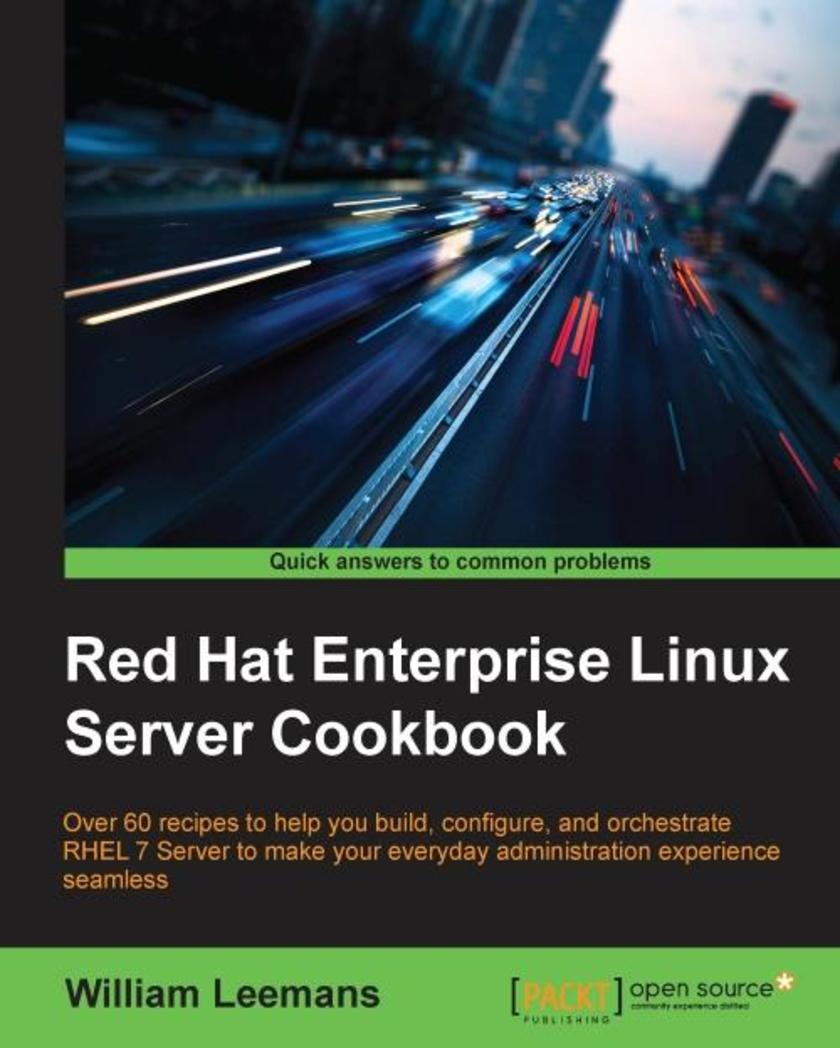
Red Hat Enterprise Linux Server Cookbook
¥90.46
Over 60 recipes to help you build, configure, and orchestrate RHEL 7 Server to make your everyday administration experience seamless About This Book Create fully unattended installations and deploy configurations without breaking a sweat Discover and kick-start the newest RHEL 7 configuration and management tools through an easy-to-follow, practical approach for a lazy system management Be guided by an experienced RHEL expert who is a certified Linux engineer with a passion for open source and open standards Who This Book Is For Red Hat Enterprise Linux Server Cookbook is for RHEL 7 system administrators and DevOps in need of a practical reference guide to troubleshoot common issues and quickly perform tasks. What You Will Learn Set up and configure RHEL 7 Server Use NetworkManager to configure all aspects of your network Manage virtual environments using libvirt Set up software repositories Secure and monitor your RHEL environment Configure SELinux, and create and apply its policies Create kickstart *s to automatically deploy RHEL 7 systems Use Orchestration and configuration management tools to manage your environment In Detail Dominating the server market, the Red Hat Enterprise Linux operating system gives you the support you need to modernize your infrastructure and boost your organization’s efficiency. Combining both stability and flexibility, RHEL helps you meet the challenges of today and adapt to the demands of tomorrow. This practical Cookbook guide will help you get to grips with RHEL 7 Server and automating its installation. Designed to provide targeted assistance through hands-on recipe guidance, it will introduce you to everything you need to know about KVM guests and deploying multiple standardized RHEL systems effortlessly. Get practical reference advice that will make complex networks setups look like child’s play, and dive into in-depth coverage of configuring a RHEL system. Also including full recipe coverage of how to set up, configuring, and troubleshoot SELinux, you’ll also discover how secure your operating system, as well as how to monitor it. Style and approach This practical guide is packed full of hands-on recipes that provide quick solutions to the problems faced when building your RHEL 7 system from scratch using orchestration tools. Each topic is explained sequentially in the process of setting up a system and binding everything together.
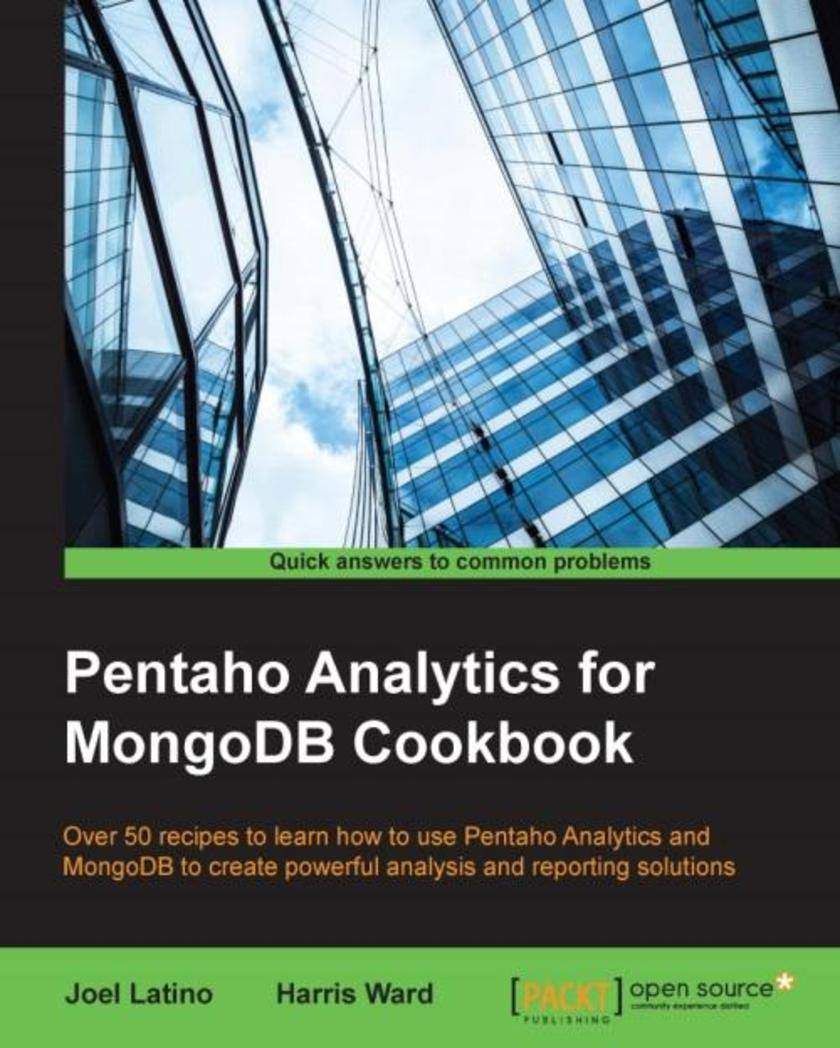
Pentaho Analytics for MongoDB Cookbook
¥80.65
Over 50 recipes to learn how to use Pentaho Analytics and MongoDB to create powerful analysis and reporting solutions About This Book Create reports and stunning dashboards with MongoDB data Accelerate data access and maximize productivity with unique features of Pentaho for MongoDB A step-by-step recipe-based guide for making full use of Pentaho suite tools with MongoDB Who This Book Is For This book is intended for data architects and developers with a basic level of knowledge of MongoDB. Familiarity with Pentaho is not expected. What You Will Learn Extract, load, and transform data from MongoDB collections to other datasources Design Pentaho Reports using different types of connections for MongoDB Create a OLAP mondrian schema for MongoDB Explore your MongoDB data using Pentaho Analyzer Utilize the drag and drop web interface to create dashboards Use Kettle Thin JDBC with MongoDB for analysis Integrate advanced dashboards with MondoDB using different types of connections Publish and run a report on Pentaho BI server using a web interface In Detail MongoDB is an open source, schemaless NoSQL database system. Pentaho as a famous open source Analysis tool provides high performance, high availability, and easy scalability for large sets of data. The variant features in Pentaho for MongoDB are designed to empower organizations to be more agile and scalable and also enables applications to have better flexibility, faster performance, and lower costs. Whether you are brand new to online learning or a seasoned expert, this book will provide you with the skills you need to create turnkey analytic solutions that deliver insight and drive value for your organization. The book will begin by taking you through Pentaho Data Integration and how it works with MongoDB. You will then be taken through the Kettle Thin JDBC Driver for enabling a Java application to interact with a database. This will be followed by exploration of a MongoDB collection using Pentaho Instant view and creating reports with MongoDB as a datasource using Pentaho Report Designer. The book will then teach you how to explore and visualize your data in Pentaho BI Server using Pentaho Analyzer. You will then learn how to create advanced dashboards with your data. The book concludes by highlighting contributions of the Pentaho Community. Style and approach A comprehensive, recipe-based guide to take complete advantage of the Pentaho Analytics for MongoDB.
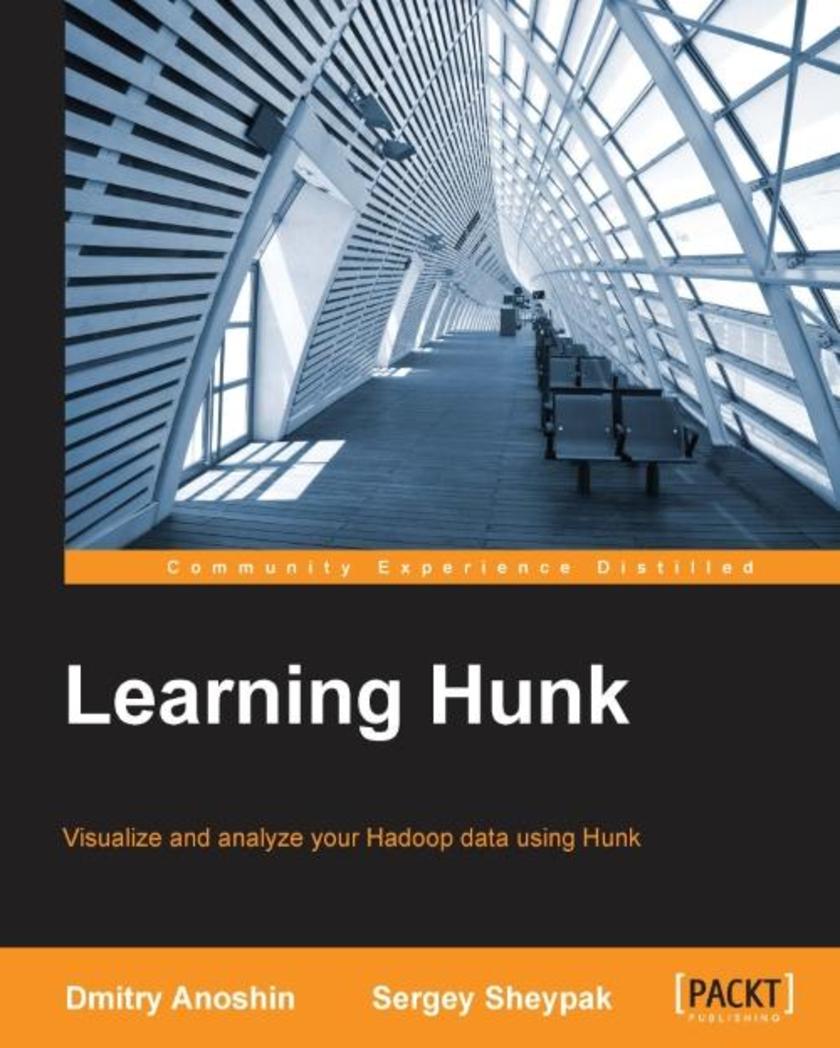
Learning Hunk
¥63.21
Visualize and analyze your Hadoop data using Hunk About This Book Explore your data in Hadoop and NoSQL data stores Create and optimize your reporting experience with advanced data visualizations and data analytics A comprehensive developer's guide that helps you create outstanding analytical solutions efficiently Who This Book Is For If you are Hadoop developers who want to build efficient real-time Operation Intelligence Solutions based on Hadoop deployments or various NoSQL data stores using Hunk, this book is for you. Some familiarity with Splunk is assumed. What You Will Learn Deploy and configure Hunk on top of Cloudera Hadoop Create and configure Virtual Indexes for datasets Make your data presentable using the wide variety of data visualization components and knowledge objects Design a data model using Hunk best practices Add more flexibility to your analytics solution via extended SDK and custom visualizations Discover data using MongoDB as a data source Integrate Hunk with AWS Elastic MapReduce to improve scalability In Detail Hunk is the big data analytics platform that lets you rapidly explore, analyse, and visualize data in Hadoop and NoSQL data stores. It provides a single, fluid user experience, designed to show you insights from your big data without the need for specialized skills, fixed schemas, or months of development. Hunk goes beyond typical data analysis methods and gives you the power to rapidly detect patterns and find anomalies across petabytes of raw data. This book focuses on exploring, analysing, and visualizing big data in Hadoop and NoSQL data stores with this powerful full-featured big data analytics platform. You will begin by learning the Hunk architecture and Hunk Virtual Index before moving on to how to easily analyze and visualize data using Splunk Search Language (SPL). Next you will meet Hunk Apps which can easy integrate with NoSQL data stores such as MongoDB or Sqqrl. You will also discover Hunk knowledge objects, build a semantic layer on top of Hadoop, and explore data using the friendly user-interface of Hunk Pivot. You will connect MongoDB and explore data in the data store. Finally, you will go through report acceleration techniques and analyze data in the AWS Cloud. Style and approach A step-by-step guide starting right from the basics and deep diving into the more advanced and technical aspects of Hunk.
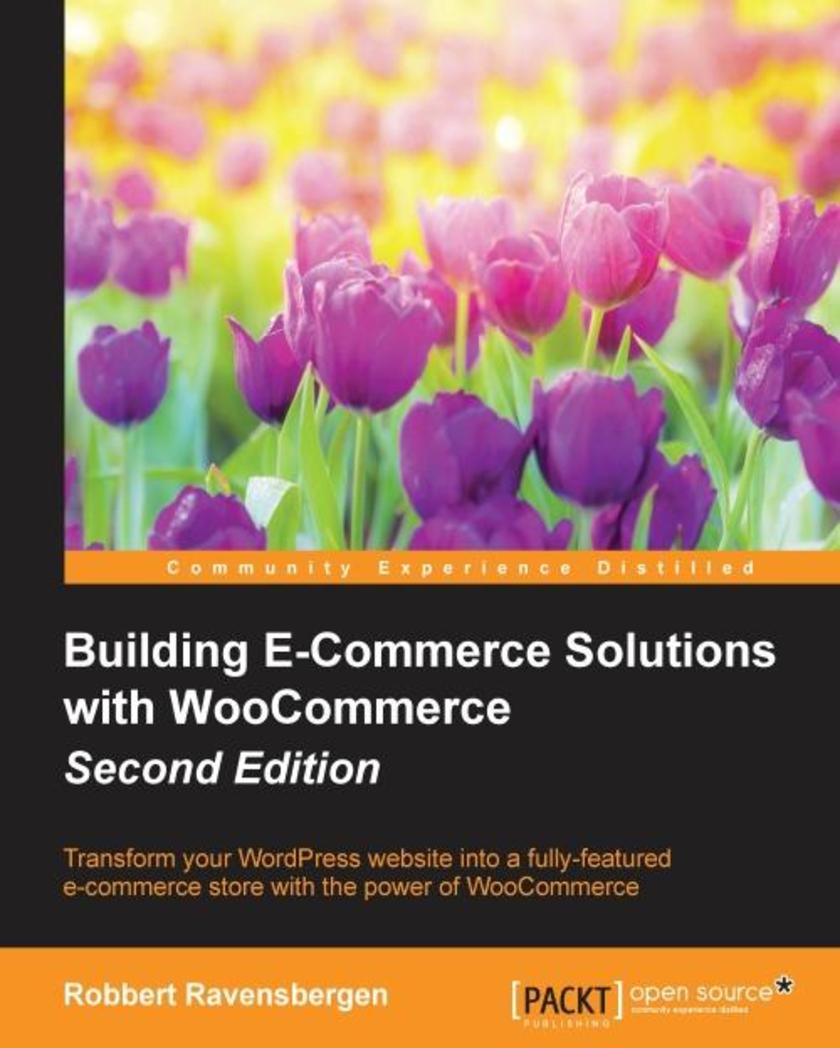
Building E-Commerce Solutions with WooCommerce - Second Edition
¥63.21
Transform your WordPress website into a fully-featured e-commerce store with the power of WooCommerce About This Book Offers do-it-yourself e-commerce solution using WordPress and WooCommerce Discover the new Onboarding wizard that makes complex processes user-friendly Manage your online store and expand its functions using plugins Who This Book Is For This book is suitable for everybody running their own WordPress website, such as small business owners and marketers. It has been written for users, not for programmers, who want to add e-commerce functionality to their existing WordPress website. The book will also appeal to Web design agencies working with WordPress and looking for ways to improve their services for clients working with WordPress. What You Will Learn Use WooCommerce settings to set up the behavior of the online store Get familiar with the downloadable and variable products Set up shipping and payment methods Use discount coupons for marketing purposes Choose the right WooCommerce theme for your online store Customize your website using the Storefront theme as a base Handle orders, payments, and emails on a daily basis with ease Work with WooCommerce reporting possibilities Expanding your online store with the functionalities offered by WooCommerce In Detail Building an online store is often considered to be a difficult, complex task. Using the combination of WordPress and the WooCommerce plugin, this is no longer the case. WooCommerce is the most popular e-commerce platform for WordPress and is being rapidly developed by WooThemes. It provides a strong e-commerce solution to set up your own online store in just a couple of hours. This easy and practical book will help you make the most of WooCommerce to be able to set up and run your online store yourself. Installing WooCommerce is an easy task, but this book will explain in detail all the possible settings. After that you'll be adding products, different payment methods, and shipping solutions to your store. You will then customize your store by adding themes to change the look and feel. Once your store is running, you'll learn how to use discount coupons, process your orders, look at reports, and even expand the functionality further with additional plugins. By the end of the book, you will learn everything you need to add a fully functional online store to you WordPress website and start running an online business. Style and approach This book is a practical, step-by-step guide that will help you manage your online store easily and efficiently, and expand its functions using the WooCommerce plug-in
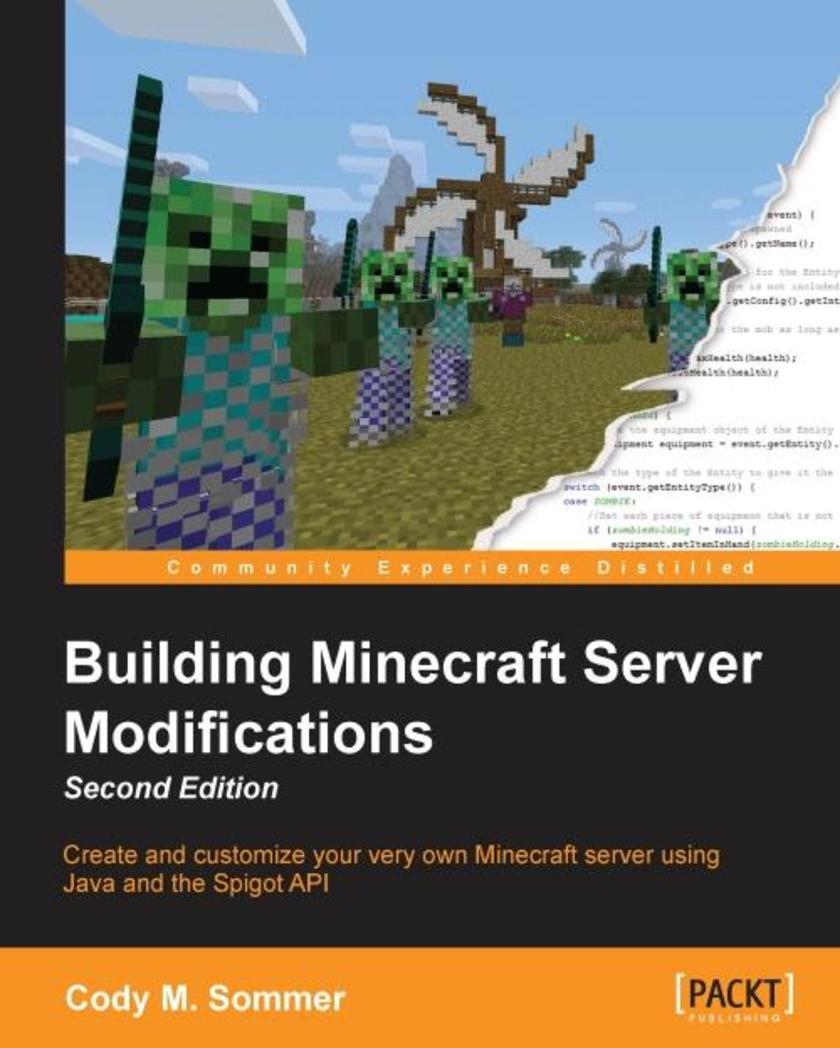
Building Minecraft Server Modifications - Second Edition
¥54.49
Create and customize your very own Minecraft server using Java and the Spigot API About This Book Set up a Minecraft server that you control Use object-oriented programming to modify Minecraft regardless of your level of experience This interactive guide will help you create a unique experience for you and your friends Who This Book Is For This book is great for anyone who is interested in customizing their Minecraft server. Whether you are new to programming, Java, Bukkit, or even Minecraft itself, this book has you covered. All you need is a valid Minecraft account. If you are interested in programming as a career or hobby, this book will get you started. If you are simply interested in playing Minecraft with your friends, then this book will help you make that experience even more enjoyable. What You Will Learn Install and run a Spigot server for free on your home PC Adjust the server settings to customize Minecraft to your liking Install an IDE and configure a project to write code Install and test plugins on a Spigot server Test your plugins through debugging the code Program in game commands and permissions Get to know advanced programming concepts such as event-driven programming, configuration files, saving/loading data, and scheduled tasks Implement configuration files to make your plugins customizable Save and load your plugin's data to persist across server restarts In Detail Minecraft is a sandbox game that allows you to play it in any way you want. Coupled with a multiplayer server powered by Spigot, you can customize the game even more! Using the Bukkit API, anyone interested in learning how to program can control their Minecraft world by developing server plugins. This book is a great introduction to software development through the wonderful world of Minecraft. We start by instructing you through how to set up your home PC for Minecraft server development. This includes an IDE complete with the required libraries as well as a Spigot server to test on. You will be guided through writing code for several different plugins. Each chapter teaches you new skills to create plugins of increasing complexity, and each plugin adds a new concept of the Bukkit API By the end of the book, you will have all the knowledge you need about the API to successfully create any type of plugin. You can then practice and build your Java skills through developing more mods for their server. Style and approach This hands-on guide is filled with interactive examples to help you modify Minecraft. Programming terms and concepts are explained along the way so even those who have never written code before can keep up.

Gradle Essentials
¥54.49
Master the fundamentals of Gradle using real-world projects with this quick and easy-to-read guide About This Book Write beautiful build *s for various types of projects effortlessly Become more productive by harnessing the power and elegance of the Gradle DSL Learn how to use Gradle quickly and effectively with this step-by-step guide Who This Book Is For This book is for Java and other JVM-based language developers who want to use Gradle or are already using Gradle on their projects. No prior knowledge of Gradle is required, but some familiarity with build-related terminologies and an understanding of the Java language would help. What You Will Learn Master the Gradle DSL by identifying the building blocks Learn just enough Groovy for Gradle Set up tests and reports for your projects to make them CI ready Create library, stand-alone, and web projects Craft multi-module projects quickly and efficiently Migrate existing projects to a modern Gradle build Extract common build logic into plugins Write builds for languages like Java, Groovy, and Scala In Detail Gradle is an advanced and modern build automation tool. It inherits the best elements of the past generation of build tools, but it also differs and innovates to bring terseness, elegance, simplicity, and the flexibility to build. Right from installing Gradle and writing your first build file to creating a fully-fledged multi-module project build, this book will guide you through its topics in a step-by-step fashion. You will get your hands dirty with a simple Java project built with Gradle and go on to build web applications that are run with Jetty or Tomcat. We take a unique approach towards explaining the DSL using the Gradle API, which makes the DSL more accessible and intuitive. All in all, this book is a concise guide to help you decipher the Gradle build files, covering the essential topics that are most useful in real-world projects. With every chapter, you will learn a new topic and be able to readily implement your build files. Style and approach This step-by-step guide focuses on being productive with every chapter. When required, topics are explained in-depth to give you a good foundation of the Gradle fundamentals. The book covers most aspects of builds required for conventional JVM-based projects, and when necessary, points you towards the right resources.
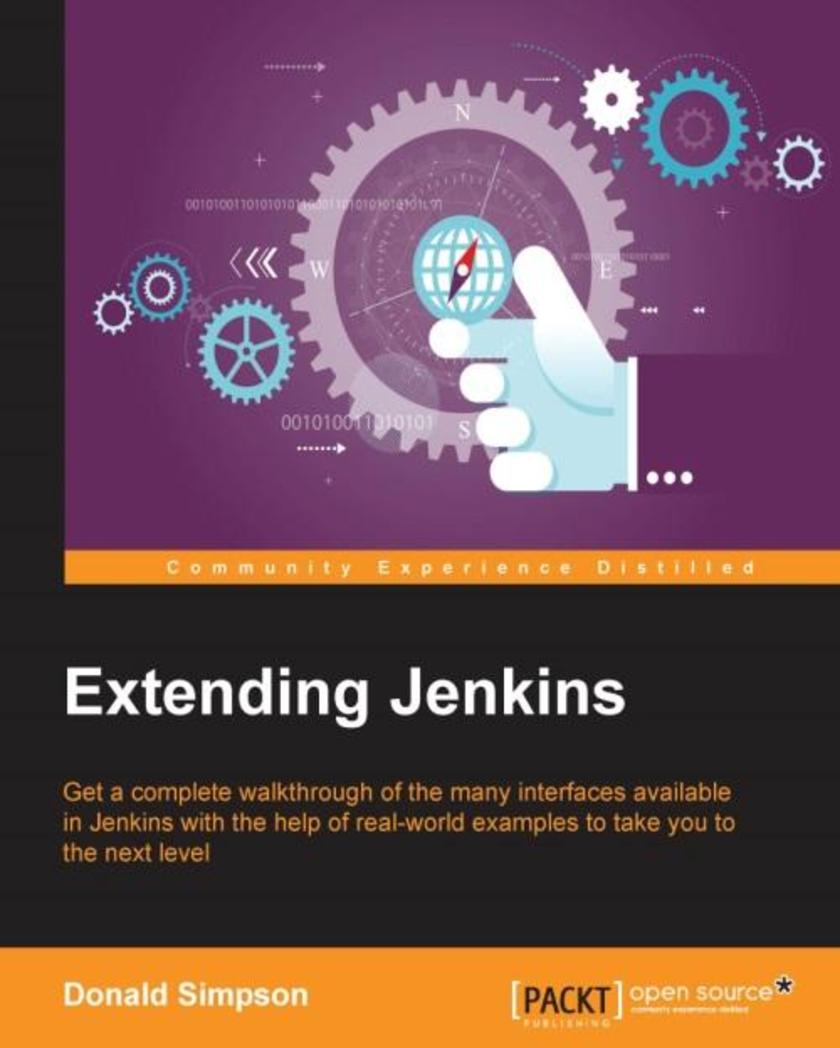
Extending Jenkins
¥63.21
Get a complete walkthrough of the many interfaces available in Jenkins with the help of real-world examples to take you to the next level with Jenkins About This Book Find out how to interact with Jenkins from within Eclipse, NetBeans, and IntelliJ IDEA Develop custom solutions that act upon Jenkins information in real time A step-by-step, practical guide to help you learn about extension points in existing plugins and how to build your own plugin Who This Book Is For This book is aimed primarily at developers and administrators who are interested in taking their interaction and usage of Jenkins to the next level. The book assumes you have a working knowledge of Jenkins and programming in general, and an interest in learning about the different approaches to customizing and extending Jenkins so it fits your requirements and your environment perfectly. What You Will Learn Retrieve and act upon Jenkins information in real time Find out how to interact with Jenkins through a variety of IDEs Develop your own Form and Input validation and customization Explore how Extension points work, and develop your own Jenkins plugin See how to use the Jenkins API and command-line interface Get to know how to remotely update your Jenkins configuration Design and develop your own Information Radiator Discover how Jenkins customization can help improve quality and reduce costs In Detail Jenkins CI is the leading open source continuous integration server. It is written in Java and has a wealth of plugins to support the building and testing of virtually any project. Jenkins supports multiple Software Configuration Management tools such as Git, Subversion, and Mercurial. This book explores and explains the many extension points and customizations that Jenkins offers its users, and teaches you how to develop your own Jenkins extensions and plugins. First, you will learn how to adapt Jenkins and leverage its abilities to empower DevOps, Continuous Integration, Continuous Deployment, and Agile projects. Next, you will find out how to reduce the cost of modern software development, increase the quality of deliveries, and thereby reduce the time to market. We will also teach you how to create your own custom plugins using Extension points. Finally, we will show you how to combine everything you learned over the course of the book into one real-world scenario. Style and approach Extending Jenkins explores and explains advanced Jenkins functionality from a practical point of view, teaching you real-world skills that will help you get more from this powerful software. Each key topic is explained clearly with a practical example, and in sufficient detail so you understand the concepts and can then develop your own solutions using your preferred software and languages.
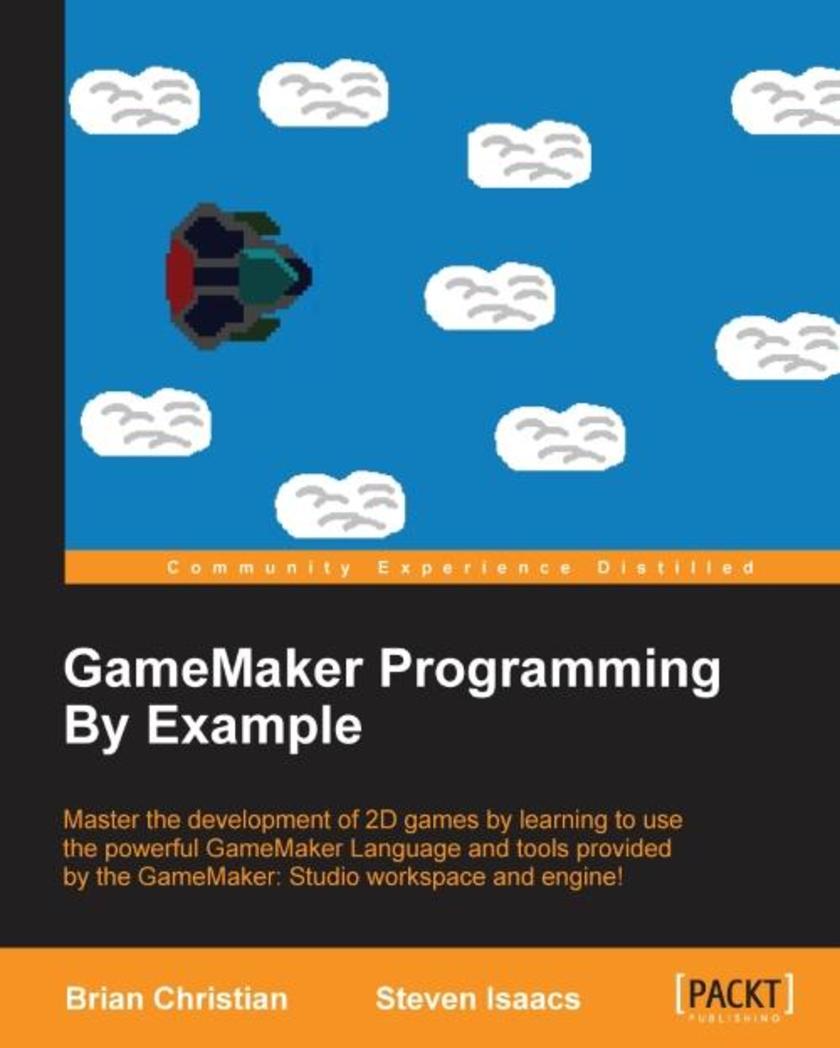
GameMaker Programming By Example
¥80.65
Master the development of 2D games by learning to use the powerful GameMaker Language and tools provided by the GameMaker: Studio workspace and engine! About This Book Rapidly develop games using the powerful yet easy easy-to to-use GameMaker: Studio engine Comprehensive: This is a comprehensive guide to help you learn and implement GameMaker’s features. Go through step-by-step tutorials to design and develop unique games Who This Book Is For If you have at least some basic programming experience of JavaScript or any other C-like languages, then this book will be great for you. No experience beyond that is assumed. If you have no game development experience and are looking for a hobby, are an experienced game developer looking to master some advanced features, or fit anywhere in that spectrum, then you will find GameMaker: Studio and this book to be very useful in helping you create exciting games. What You Will Learn Understand the GameMaker: Studio interface and tools to quickly create the various assets used in your games Translate some of the GameMaker: Studio drag and drop functions to the GameMaker language Create games with random elements for exciting gameplay Use the basic GameMaker file I/O and encryption systems Utilize the GameMaker networking functions to create multiplayer games Give AI routines to your enemies to make challenging gameplay Create particle systems to give your game exciting graphics Understand the various debugging techniques available in GameMaker: Studio In Detail This book is excellent resource for developers with any level of experience of GameMaker. At the start, we’ll provide an overview of the basic use of GameMaker: Studio, and show you how to set up a basic game where you handle input and collisions in a top-down perspective game. We continue on to showcase its more advanced features via six different example projects. The first example game demonstrates platforming with file I/O, followed by animation, views, and multiplayer networking. The next game illustrates AI and particle systems, while the final one will get you started with the built-in Box2D physics engine. By the end of this book, you have mastered lots of powerful techniques that can be utilized in various 2D games. Style and approach A This step-by-step guide that follows and with details ons different topics throughout the creation of various examples.
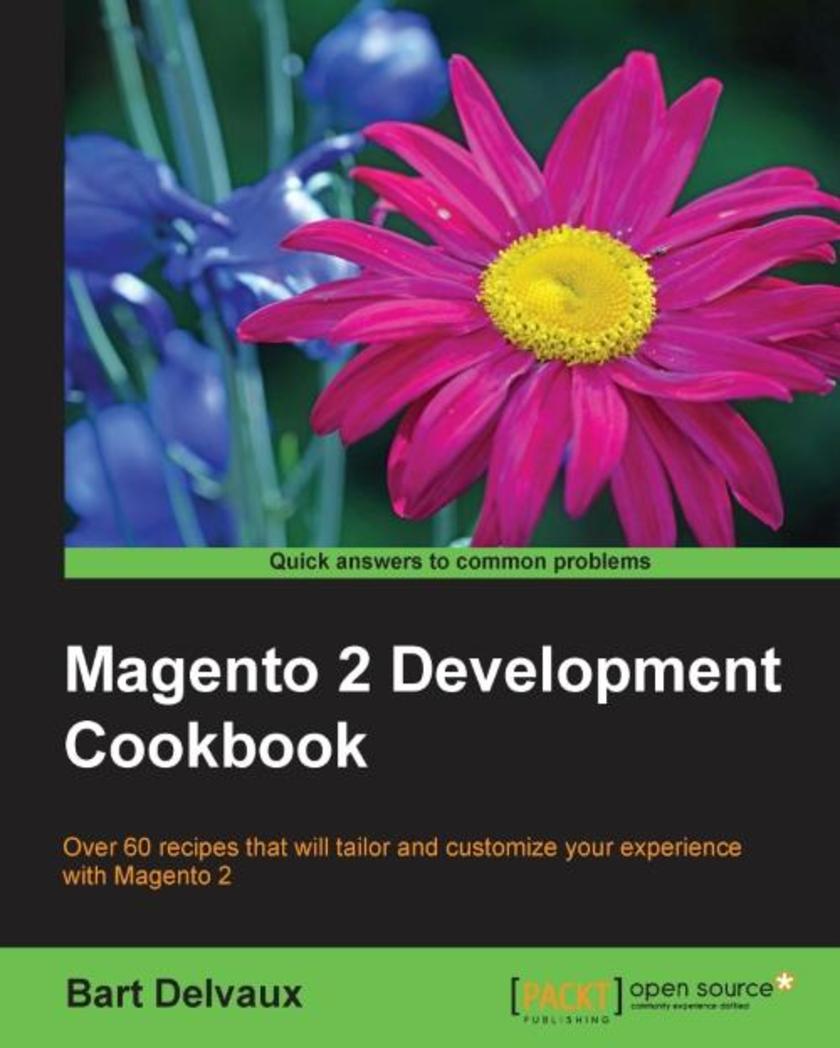
Magento 2 Development Cookbook
¥90.46
Over 60 recipes that will tailor and customize your experience with Magento 2 About This Book Solve common problems encountered while extending your Magento 2 store to fit your business needs Delve into the exciting and enhanced features of Magento 2 such as customizing security permissions, intelligent filtered search options, easy third-party integration, among others Learn to build and maintain a Magento 2 shop via a visual-based page editor and customize the look and feel using Magento 2’s offerings on the go Who This Book Is For This book is for every developer who has knowledge of PHP and wants to extend or customize the functionality of their Magento 2 system. If you have prior experience of the Magento platform, you will find this book useful in exploring the advanced features. What You Will Learn Install a Magento 2 shop with sample data Upgrade the data in a Magento 1 shop to a Magento 2 shop Manage the look and feel of the shop with custom themes Extend the shop with custom functionality such as forms, grids, and more Accelerate your store with some performance tool Build and structure your own shipping module Test your shop with automated tests and manage your product display In Detail With the challenges of growing an online business, Magento 2 is an open source e-commerce platform with innumerable functionalities that gives you the freedom to make on-the-fly decisions. It allows you to customize multiple levels of security permissions and enhance the look and feel of your website, and thus gives you a personalized experience in promoting your business. Style and approach This book is packed with a wide range of techniques to modify and extend the functionality of your online store. It contains easy-to-understand recipes starting with the basics and moving on to cover advanced topics. Many recipes work with code examples that can be downloaded from the book’s website.
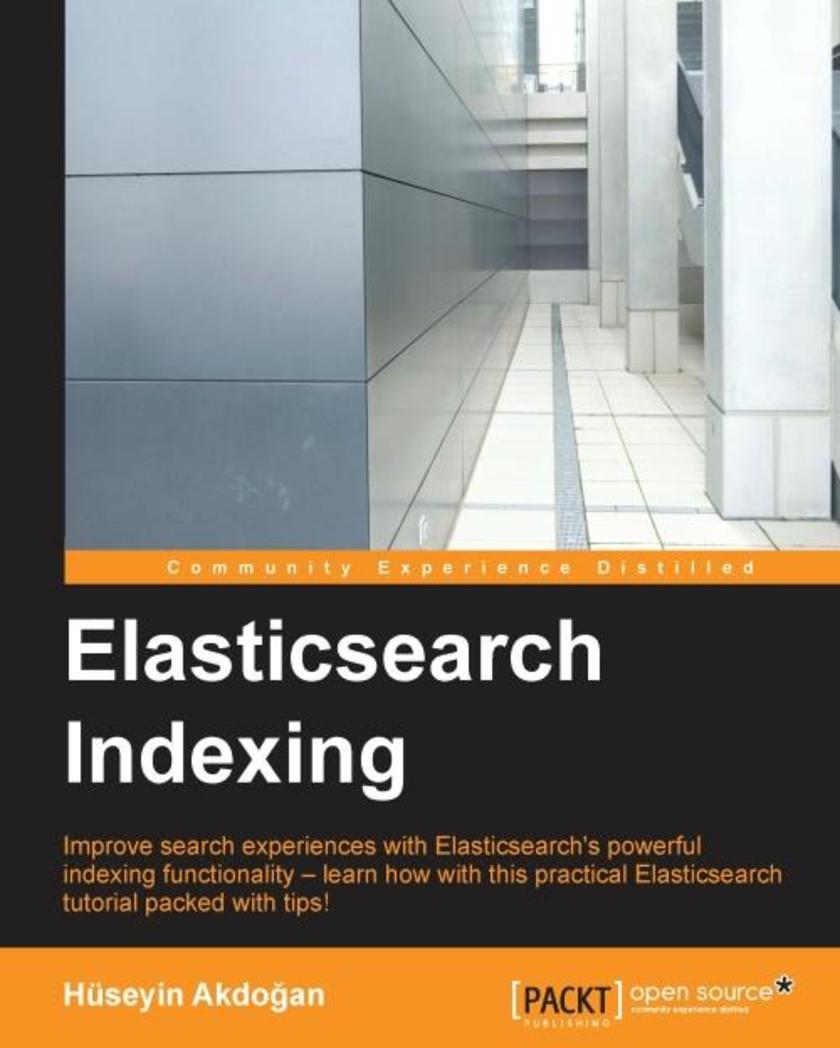
Elasticsearch Indexing
¥54.49
Improve search experiences with ElasticSearch’s powerful indexing functionality – learn how with this practical ElasticSearch tutorial, packed with tips! About This Book Improve user’s search experience with the correct configuration Deliver relevant search results – fast! Save time and system resources by creating stable clusters Who This Book Is For If you understand the importance of a great search experience this book will show you exactly how to build one with ElasticSearch, one of the world’s leading search servers. What You Will Learn Learn how ElasticSearch efficiently stores data – and find out how it can reduce costs Control document metadata with the correct mapping strategies and by configuring indices Use ElasticSearch analysis and analyzers to incorporate greater intelligence and organization across your documents and data Find out how an ElasticSearch cluster works – and learn the best way to configure it Perform high-speed indexing with low system resource cost Improve query relevance with appropriate mapping, suggest API, and other ElasticSearch functionalities In Detail Beginning with an overview of the way ElasticSearch stores data, you’ll begin to extend your knowledge to tackle indexing and mapping, and learn how to configure ElasticSearch to meet your users’ needs. You’ll then find out how to use analysis and analyzers for greater intelligence in how you organize and pull up search results – to guarantee that every search query is met with the relevant results! You’ll explore the anatomy of an ElasticSearch cluster, and learn how to set up configurations that give you optimum availability as well as scalability. Once you’ve learned how these elements work, you’ll find real-world solutions to help you improve indexing performance, as well as tips and guidance on safety so you can back up and restore data. Once you’ve learned each component outlined throughout, you will be confident that you can help to deliver an improved search experience – exactly what modern users demand and expect. Style and approach This is a comprehensive guide to performing efficient indexing and providing relevant search results using mapping, analyzers, and other ElasticSearch functionalities.
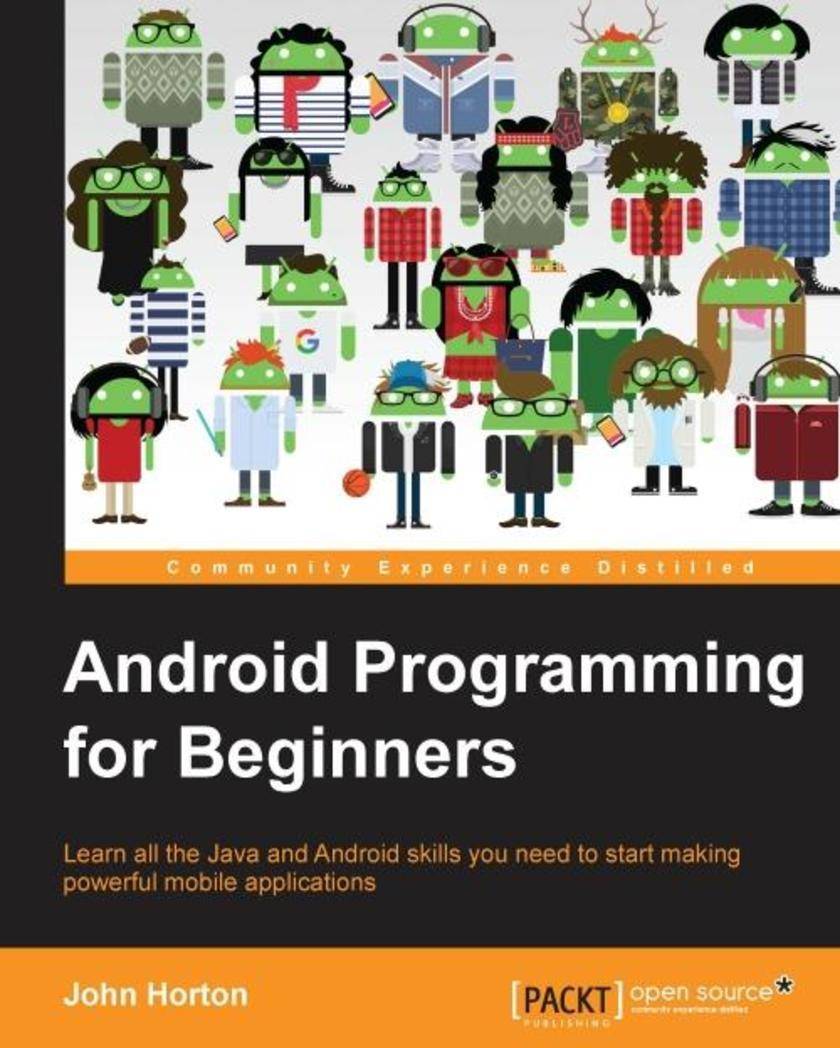
Android Programming for Beginners
¥90.46
Learn all the Java and Android skills you need to start making powerful mobile applications About This Book Kick-start your Android programming career, or just have fun publishing apps to the Google Play marketplace A first-principles introduction to Java, via Android, which means you’ll be able to start building your own applications from scratch Learn by example and build three real-world apps and over 40 mini apps throughout the book Who This Book Is For Are you trying to start a career in programming, but haven’t found the right way inDo you have a great idea for an app, but don’t know how to make it a realityOr maybe you’re just frustrated that “to learn Android, you must know java.” If so, Android Programming for Beginners is for you. You don’t need any programming experience to follow along with this book, just a computer and a sense of adventure. What You Will Learn Master the fundamentals of coding Java for Android Install and set up your Android development environment Build functional user interfaces with the Android Studio visual designer Add user interaction, data captures, sound, and animation to your apps Manage your apps’ data using the built-in Android SQLite database Find out about the design patterns used by professionals to make top-grade applications Build, deploy, and publish real Android applications to the Google Play marketplace In Detail Android is the most popular OS in the world. There are millions of devices accessing tens of thousands of applications. It is many people's entry point into the world of technology; it is an operating system for everyone. Despite this, the entry-fee to actually make Android applications is usually a computer science degree, or five years’ worth of Java experience. Android Programming for Beginners will be your companion to create Android applications from scratch—whether you’re looking to start your programming career, make an application for work, be reintroduced to mobile development, or are just looking to program for fun. We will introduce you to all the fundamental concepts of programming in an Android context, from the Java basics to working with the Android API. All examples are created from within Android Studio, the official Android development environment that helps supercharge your application development process. After this crash-course, we’ll dive deeper into Android programming and you’ll learn how to create applications with a professional-standard UI through fragments, make location-aware apps with Google Maps integration, and store your user’s data with SQLite. In addition, you’ll see how to make your apps multilingual, capture images from a device’s camera, and work with graphics, sound, and animations too. By the end of this book, you’ll be ready to start building your own custom applications in Android and Java. Style and approach With more than 40 mini apps to code and run, Android Programming for Beginners is a hands-on guide to learning Android and Java. Each example application demonstrates a different aspect of Android programming. Alongside these mini apps, we push your abilities by building three larger applications to demonstrate Android application development in context.

Frankenstein Unbound (The Monster Trilogy)
¥34.14
When Joe Bodenland is suddenly transported back in time to the year 1816, his first reaction is of eager curiosity rather than distress… This is Aldiss’ response to Mary Shelley’s Frankenstein, available for the first time in eBook. When Joe Bodenland is suddenly transported back in time to the year 1816, his first reaction is of eager curiosity rather than distress. Certainly the Switzerland in which he finds himself, with its charming country inns, breathtaking landscapes and gentle, unmechanised pace of life, is infinitely preferable to the America of 2020 where the games of politicians threaten total annihilation. But after meeting the brooding young Victor Frankenstein, Joe realises that this world is more complex than the one he left behind. Is Frankenstein real, or are both Joe and he living out fictional lives? BRIAN SAYS: Developed as a tribute to Mary Shelley’s work, following the writing of Billion Year Spree, with its proposal, since widely adopted, that Frankenstein is the first seminal work to which the label “SF” can be logically attached. Frankenstein makes a female monster to accompany the male; Bodenland, lost from our time, hunts down first Frankenstein and then the monsters, becoming monstrous himself in the process.
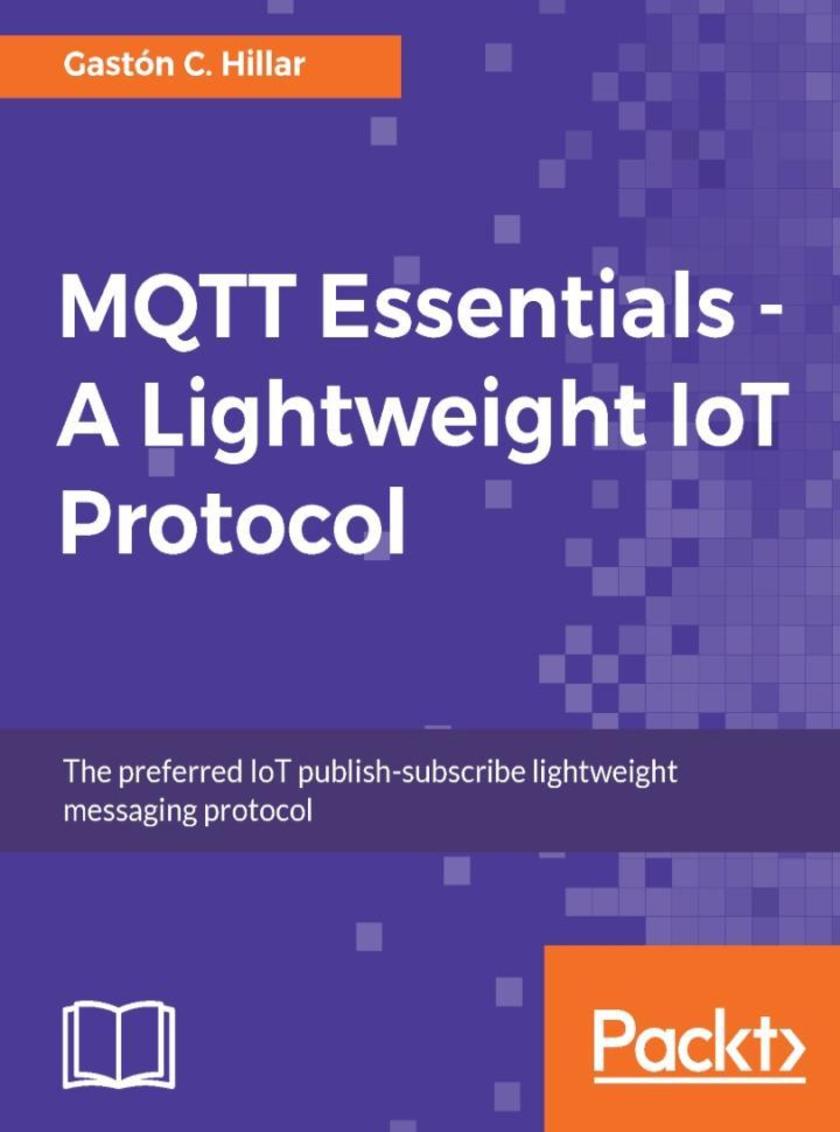
MQTT Essentials - A Lightweight IoT Protocol
¥71.93
This step-by-step guide will help you gain a deep understanding of the lightweight MQTT protocol. We’ll begin with the specific vocabulary of MQTT and its working modes, followed by installing a Mosquitto MQTT broker. Then, you will use best practices to secure the MQTT Mosquitto broker to ensure that only authorized clients are able to publish and receive messages. Once you have secured the broker with the appropriate configuration, you will develop a solution that controls a drone with Python. Further on, you will use Python on a Raspberry Pi 3 board to process commands and Python on Intel Boards (Joule, Edison and Galileo). You will then connect to the MQTT broker, subscribe to topics, send messages, and receive messages in Python. You will also develop a solution that interacts with sensors in Java by working with MQTT messages. Moving forward, you will work with an asynchronous API with callbacks to make the sensors interact with MQTT messages. Following the same process, you will develop an iOS app with Swift 3, build a website that uses WebSockets to connect to the MQTT broker, and control home automation devices with HTML5, JavaScript code, Node.js and MQTT messages What you will learn ?Understand how MQTTv3.1 and v3.1.1 works in detail ?Install and secure a Mosquitto MQTT broker by following best practices ?Design and develop IoT solutions combined with mobile and web apps that use MQTT messages to communicate ?Explore the features included in MQTT for IoT and Machine-to-Machine communications ?Publish and receive MQTT messages with Python, Java, Swift, JavaScript, and Node.js ?Implement the security best practices while setting up the MQTT Mosquitto broker
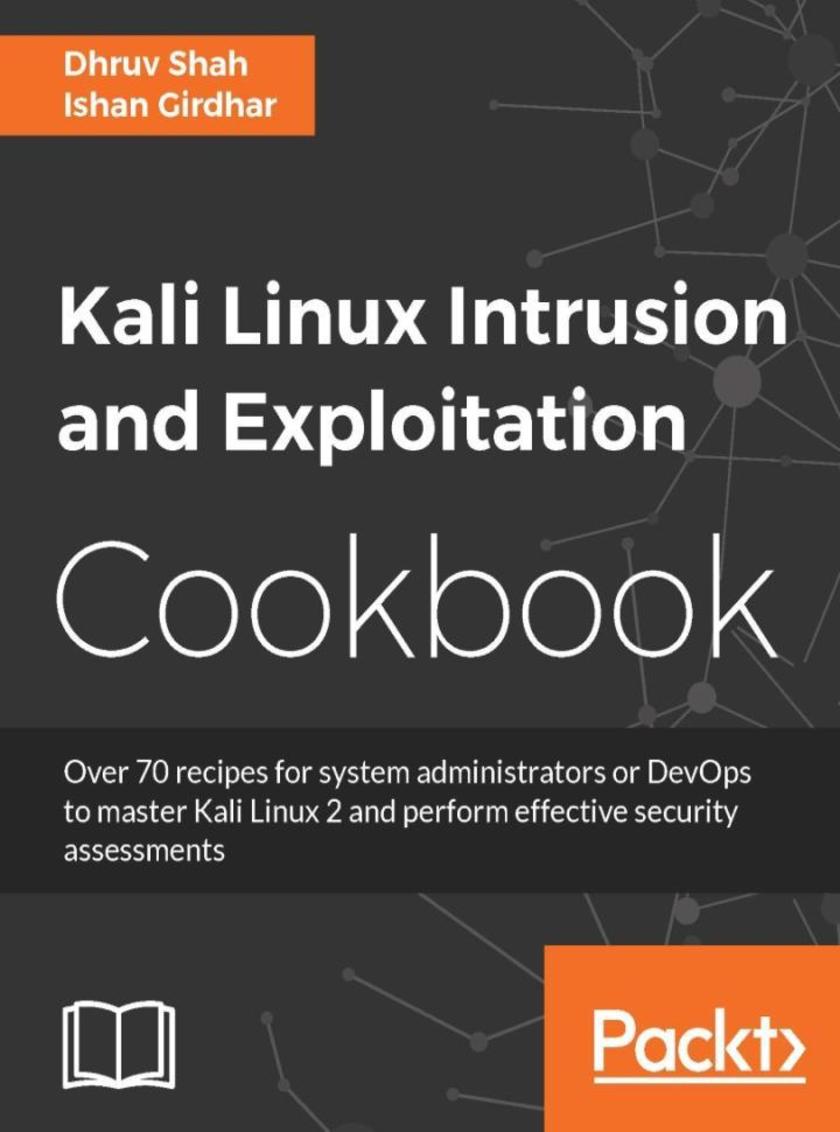
Kali Linux Intrusion and Exploitation Cookbook
¥80.65
Over 70 recipes for system administrators or DevOps to master Kali Linux 2 and perform effective security assessments About This Book ?Set up a penetration testing lab to conduct a preliminary assessment of attack surfaces and run exploits ?Improve your testing efficiency with the use of automated vulnerability scanners ?Work through step-by-step recipes to detect a wide array of vulnerabilities, exploit them to analyze their consequences, and identify security anomalies Who This Book Is For This book is intended for those who want to know more about information security. In particular, it's ideal for system administrators and system architects who want to ensure that the infrastructure and systems they are creating and managing are secure. This book helps both beginners and intermediates by allowing them to use it as a reference book and to gain in-depth knowledge. What You Will Learn ?Understand the importance of security assessments over merely setting up and managing systems/processes ?Familiarize yourself with tools such as OPENVAS to locate system and network vulnerabilities ?Discover multiple solutions to escalate privileges on a compromised machine ?Identify security anomalies in order to make your infrastructure secure and further strengthen it ?Acquire the skills to prevent infrastructure and application vulnerabilities ?Exploit vulnerabilities that require a complex setup with the help of Metasploit In Detail With the increasing threats of breaches and attacks on critical infrastructure, system administrators and architects can use Kali Linux 2.0 to
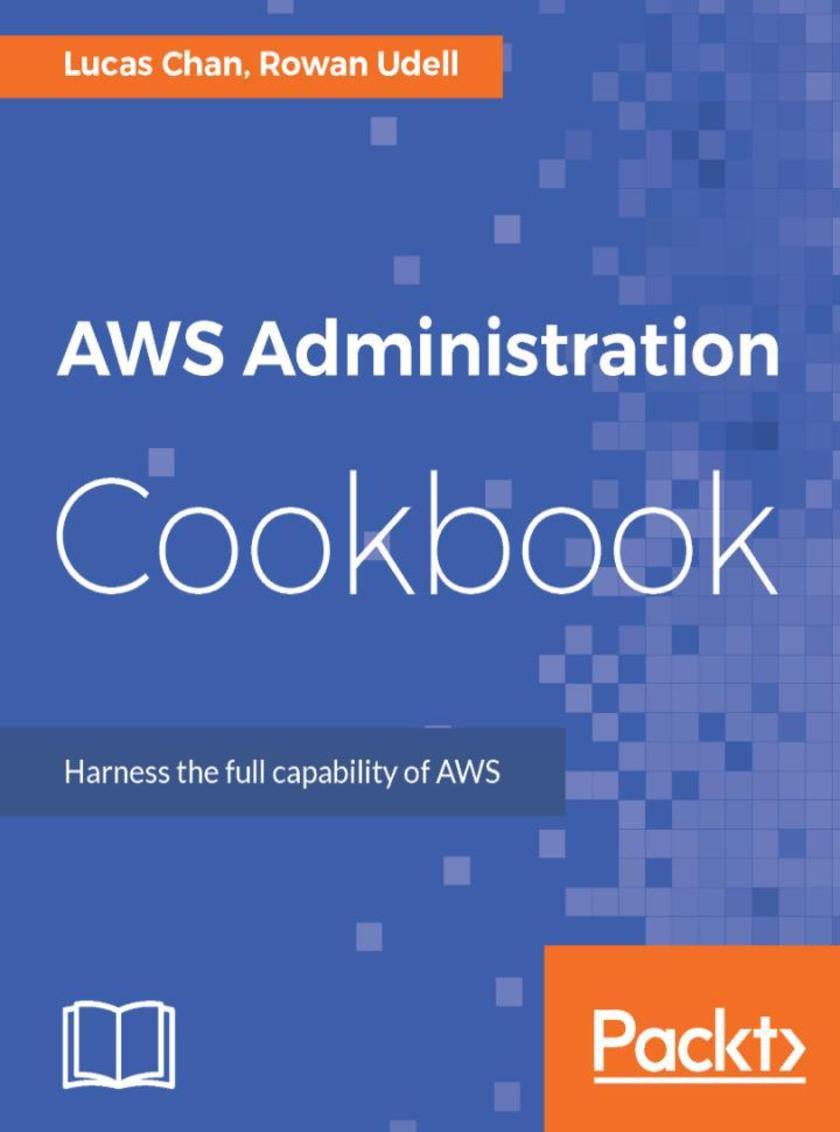
AWS Administration Cookbook
¥80.65
Amazon Web Services (AWS) is a bundled remote computing service that provides cloud computing infrastructure over the Internet with storage, bandwidth, and customized support for application programming interfaces (API). Implementing these services to efficiently administer your cloud environments is a core task. This book will help you build and administer your cloud environment with AWS. We'll begin with the AWS fundamentals, and you'll build the foundation for the recipes you'll work on throughout the book. Next, you will find out how to manage multiple accounts and set up consolidated billing. You will then learn to set up reliable and fast hosting for static websites, share data between running instances, and back up your data for compliance. Moving on, you will find out how to use the compute service to enable consistent and fast instance provisioning, and will see how to provision storage volumes and autoscale an application server. Next, you'll discover how to effectively use the networking and database service of AWS. You will also learn about the different management tools of AWS along with securing your AWS cloud. Finally, you will learn to estimate the costs for your cloud. By the end of the book, you will be able to easily administer your AWS cloud. What you will learn ?Discover the best practices to achieve an automated repeatable infrastructure in AWS ?Bring down your IT costs by managing AWS successfully and deliver high availability, fault tolerance, and scalability ?Make any website faster with static and dynamic caching ?Create monitoring and alerting dashboards using CloudWatch ?Migrate a database to AWS ?Set up consolidated billing to achieve simple and effective cost management with accounts ?Host a domain and find out how you can automate health checks About the Author Lucas Chan has been working in tech since 1995 in a variety of development, systems admin, and DevOps roles. He is currently a senior consultant and engineer at Versent and technical director at Stax. He's been running production workloads on AWS for over 10 years. He's also a member of the APAC AWS warriors program and holds all five of the available AWS certifications. Rowan Udell has been working in development and operations for 15 years. He has held a variety of positions, such as SRE, frontend developer, backend developer, consultant, technical lead, and team leader. His travels have seen him work in start-ups and enterprises in the finance, education, and web industries in Australia and Canada. He currently works as a senior consultant with Versent, an AWS Advanced Partner in Sydney. He specializes in serverless applications and architectures on AWS, and contributes actively in the Serverless Framework community.
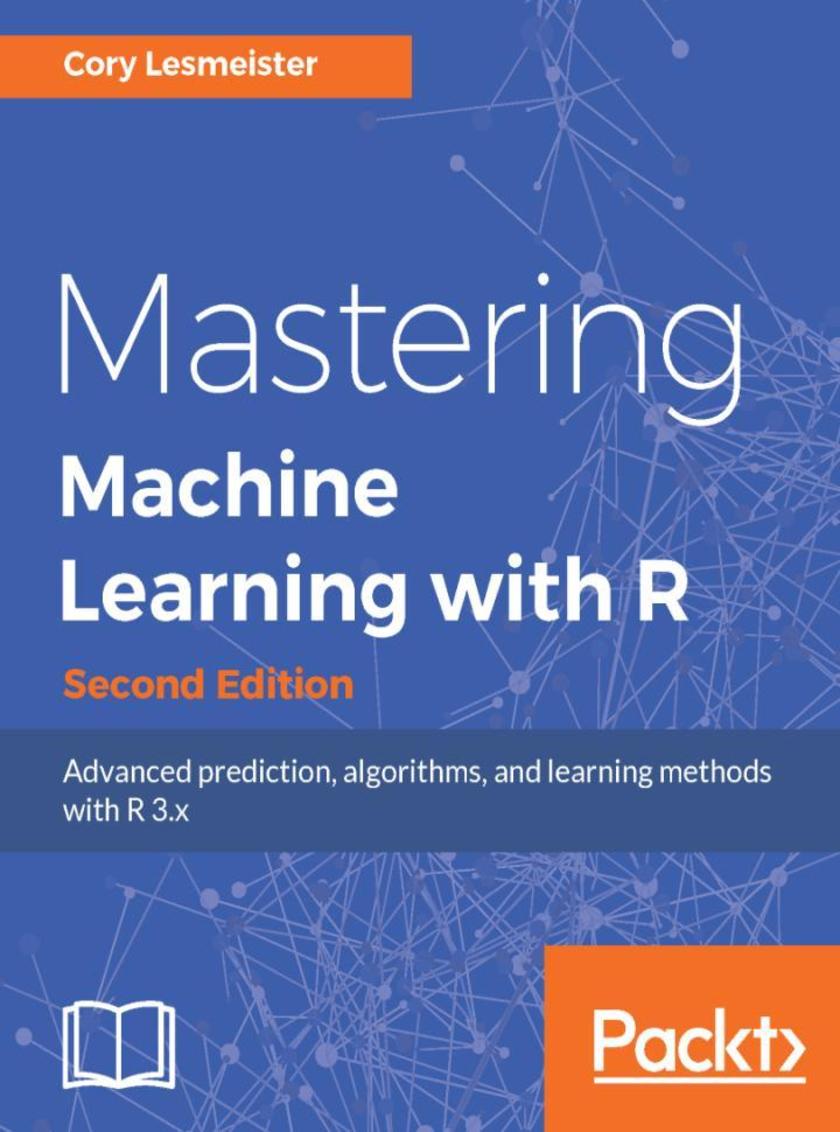
Mastering Machine Learning with R - Second Edition
¥90.46
This book will teach you advanced techniques in machine learning with the latest code in R 3.3.2. You will delve into statistical learning theory and supervised learning; design efficient algorithms; learn about creating Recommendation Engines; use multi-class classification and deep learning; and more. You will explore, in depth, topics such as data mining, classification, clustering, regression, predictive modeling, anomaly detection, boosted trees with XGBOOST, and more. More than just knowing the outcome, you'll understand how these concepts work and what they do. With a slow learning curve on topics such as neural networks, you will explore deep learning, and more. By the end of this book, you will be able to perform machine learning with R in the cloud using AWS in various scenarios with different datasets. What you will learn ?Gain deep insights into the application of machine learning tools in the industry ?Manipulate data in R efficiently to prepare it for analysis ?Master the skill of recognizing techniques for effective visualization of data ?Understand why and how to create test and training data sets for analysis ?Master fundamental learning methods such as linear and logistic regression ?Comprehend advanced learning methods such as support vector
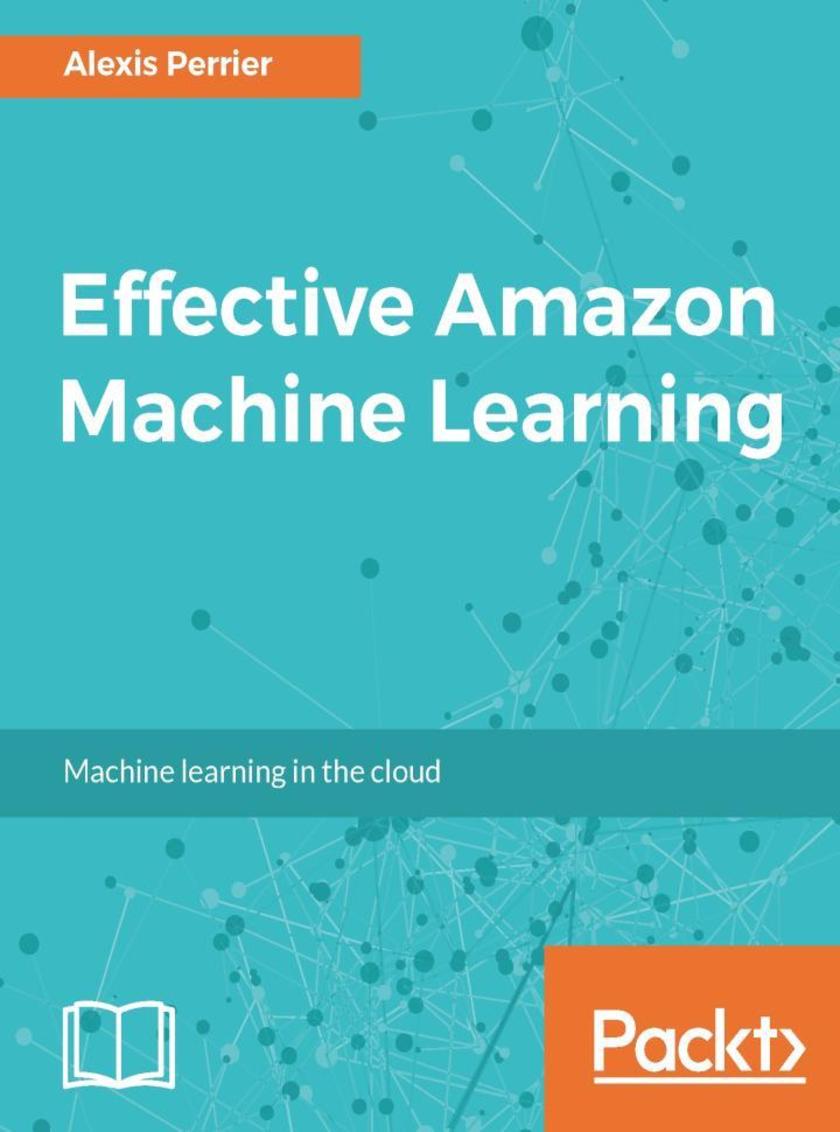
Effective Amazon Machine Learning
¥90.46
Predictive analytics is a complex domain requiring coding skills, an understanding of the mathematical concepts underpinning machine learning algorithms, and the ability to create compelling data visualizations. Following AWS simplifying Machine learning, this book will help you bring predictive analytics projects to fruition in three easy steps: data preparation, model tuning, and model selection. This book will introduce you to the Amazon Machine Learning platform and will implement core data science concepts such as classification, regression, regularization, overfitting, model selection, and evaluation. Furthermore, you will learn to leverage the Amazon Web Service (AWS) ecosystem for extended access to data sources, implement realtime predictions, and run Amazon Machine Learning projects via the command line and the Python SDK. Towards the end of the book, you will also learn how to apply these services to other problems, such as text mining, and to more complex datasets. What you will learn ?Learn how to use the Amazon Machine Learning service from scratch for predictive analytics ?Gain hands-on experience of key Data Science concepts ?Solve classic regression and classification problems ?Run projects programmatically via the command line and the Python SDK




 购物车
购物车 个人中心
个人中心



